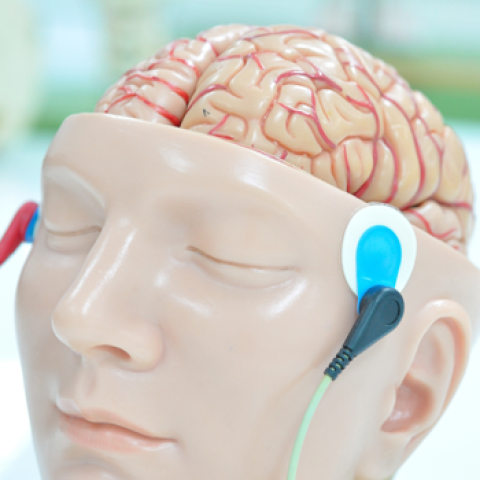Interdisciplinary Initiatives Program Round 8 - 2016
Anthony M. Norcia, Psychology
Martin Breidenbach, Particle Physics & Astrophysics
Stephen Boyd, Electrical Engineering
Nolan Williams, Psychiatry & Behavioral Sciences
Neural activity related to sensory and cognitive processing can be modulated through the application of weak electrical currents via electrodes placed on the scalp. This approach, known as Transcranial Electrical Stimulation (TES) has shown promise in treating a number of neurological, ophthalmic and psychiatric disorders. Progress on wide-spread application of TES is hampered by a poor understanding of its mechanism of action and the need for better means of designing and assessing different stimulation protocols. The goal of this proposal is to provide new hardware and software instrumentation that will fill this gap. Specifically, the proposal will develop a proof-of-concept device that will make it possible to record high-quality Electroencephalogram (EEG) signals during TES. This problem is technically challenging due to the fact that EEG signals of microvolt scale must be recorded in the face of electrical artifacts on the scale of volts. Our proposal is to develop a hardware-software device that temporally interleaves stimulation and sensing in such a way to provide access to high-quality EEG signals during TES. The recorded EEG signals will be used to monitor the interaction of brain responses to visual stimuli that have been presented in synchrony with the electrical stimulation as the initial application in humans. The project brings together SLAC hardware designers, physicists and electrical engineers with experts in human neuroscience from Stanford’s Departments of Psychology and Psychiatry and an expert in control theory and phased-array antenna design from Stanford’s Department of Electrical Engineering. This project will forge new collaborative relationships across the disciplines of Neuroscience, Physics and Electrical Engineering, across (Engineering, Humanities and Sciences and Medicine) as well as between a national laboratory (SLAC) and the University. The long-term goal of the project is to develop high-resolution versions of the system that can be used clinically in humans for therapy and rehabilitation and for basic-science applications in both humans and in experimental animal systems where a range of novel high-density electrode arrays with very high spatial resolution can be deployed.





